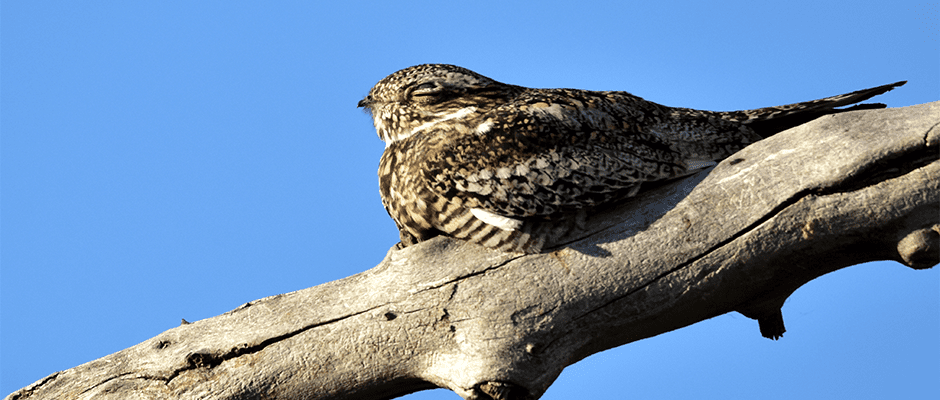Share this article
Where do nighthawks spend the winter?
Common nighthawks (Chordeiles minor) have declined about 80 percent since 1968, but researchers hadn’t yet known where they go for the winter — information that could be important in understanding what’s causing their decline.
“It’s generally known that they spend their winters somewhere in South America,” said Janet Ng, a PhD candidate at the University of Alberta and the lead author of the paper published in the Canadian Journal of Zoology. “We never came across where that knowledge came from.”
Ng suspects these were just observations. To answer the question scientifically, a team including collaborators from the University of Alberta and the Smithsonian Migratory Bird Research Center’s Migratory Connectivity Project set out to discover where the aerial insectivore overwinters and the route that the threatened bird takes. But first, they had to overcome a few hurdles.
Before 2015, satellite transmitters were about the size of a person’s palm and weighed too much to fit on a 90-gram nighthawk. But new tiny satellite tracking technology weighing about as much as a penny allowed researchers to remotely track the birds on their migration and wintering grounds without having to recapture them.
Capturing the birds was also a feat. Nighthawks have superb eyesight that they use to capture insects midair, Ng said, but this also helps them see mist nets that biologists often use to capture birds. To overcome this hurdle, Ng and her colleagues played another male’s birdcall through a speaker system to lure the bird to the mist net. They also used a decoy nighthawk — just two pieces of cardboard that looked similar to a paper airplane, painted to resemble a nighthawk. The plan worked. Sensing an intruder might be around, the birds accidentally got caught in the mist net.
After attaching the devices, then came the waiting game for the data. “We had to wait a full year to get the data,” Ng said. “It was as painful as you might expect.”
But when they did receive the data, what they found surprised them. In the summer, the birds occupy habitat in the U.S. and Canada. Whether they’re in boreal forest, tundra or cities, they always choose open habitat, Ng said. The birds spent their winters in Brazil, researchers discovered, and remarkably, some of them spent their time in the deep Amazon — a far cry from open habitat.
“I would never had expected them to be in the deep Amazon,” she said. “They need to fly through the air to catch insects.”
This study is the first snapshot of a much larger picture in understanding the ecology and migration of the nighthawk, Ng said, in an attempt to see if factors like habitat loss or insect declines from pesticide use may contribute to their decline, and to see what threats they may face throughout their migration.
“There’s tons to learn to see how these birds are using that landscape to meet their needs,” Ng said.
Header Image: Researchers fit nighthawks with satellite transmitters that weighed about the size of a penny to track their migration during the winter. They found the birds spend their winters in Brazil. ©Tom Koerner/USFWS








